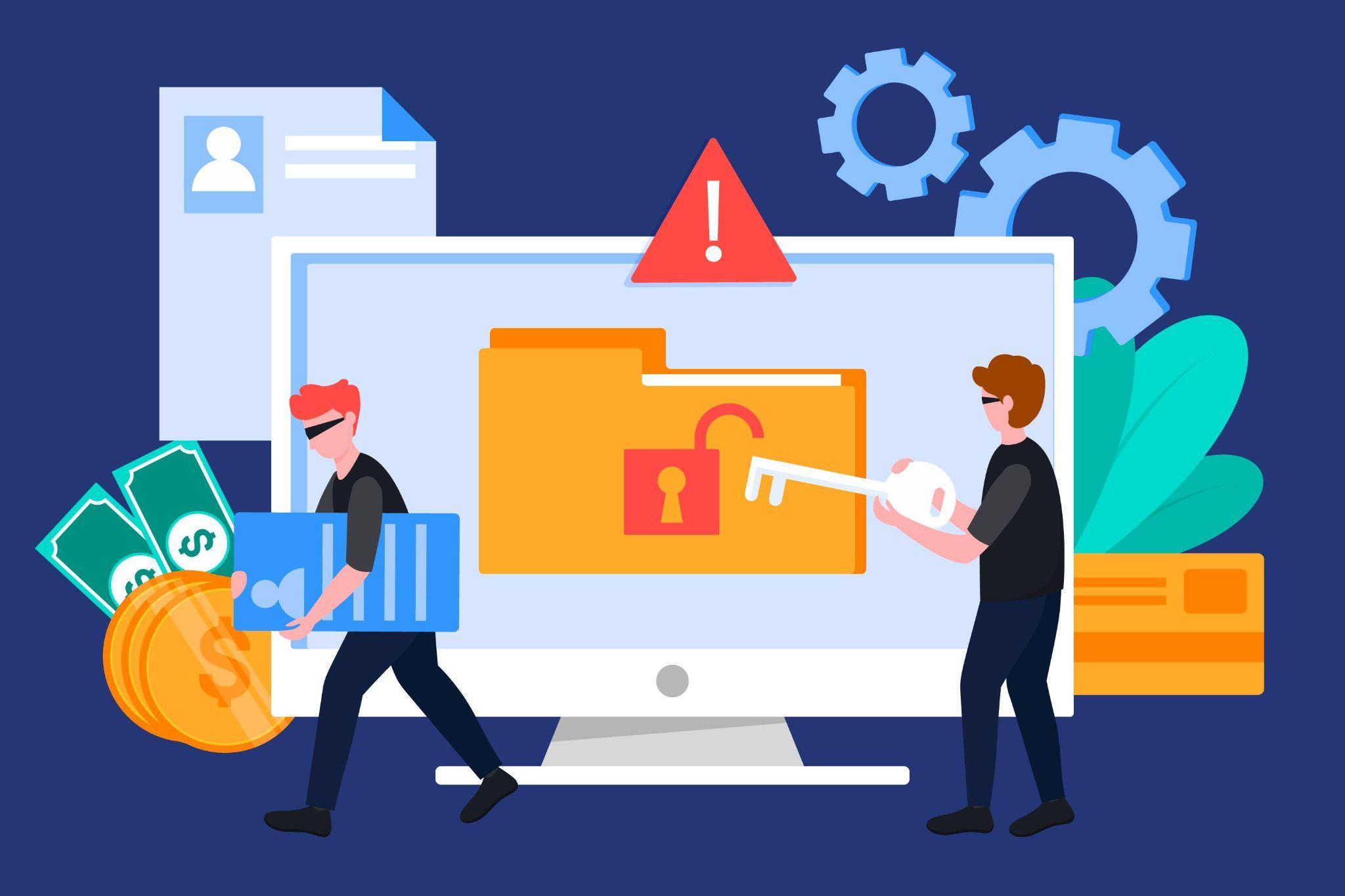In our digital world, cybersecurity is crucial. Every day, cyber threats become more complex, making attentiveness and knowledge essential. The cybersecurity scene in 2023 is particularly intricate, presenting numerous risks to the safety of our data. In this guide, we’ll explore the top ten dangerous cybersecurity risks that both individuals and businesses need to take seriously.
These cyber threats are a real concern for businesses of all sizes, potentially causing severe damage. On average, a data breach in the U.S. could cost a business $9.4 million, and phishing attacks steal $17,700 every minute. That’s why it’s more important than ever to protect sensitive information and understand the risks. Learning about current and future cyber threats is key to maintaining trust and integrity in the digital age.
1. Ransomware Attacks:
Ransomware has become the bane of the digital world, with attacks increasing by 150% in the past year alone. The damage costs are predicted to exceed $20 billion globally, making it a paramount threat. These malicious software programs encrypt a user’s files, demanding payment for their release. Notable examples include the WannaCry and Petya attacks, which wreaked havoc across industries. Protection measures include regular backups, employee training, and deploying advanced malware protection tools.
2. Phishing Scams:
Phishing remains a prevalent threat, with 32% of breaches involving phishing activity. Cybercriminals are becoming more sophisticated, employing social engineering techniques to deceive users into revealing sensitive information. Businesses must invest in advanced email filtering solutions and conduct regular awareness training to mitigate these risks through top security companies in dubai.
3. IoT Vulnerabilities:
The Internet of Things (IoT) is revolutionizing industries, but it also introduces new security challenges. By 2023, there will be an estimated 43 billion IoT devices in use. However, many of these devices have inadequate security measures, making them susceptible to attacks. Ensuring secure development practices and conducting regular security assessments are crucial steps in safeguarding IoT ecosystems.
4. Supply Chain Attacks:
Supply chain attacks have risen by 42% in the past year, highlighting the need for robust vendor risk management. These attacks target software providers to compromise their products and infiltrate customer networks. The SolarWinds incident serves as a stark reminder of the potential damage these attacks can inflict. Organizations must conduct thorough security evaluations of their suppliers and monitor their networks for any signs of compromise.
5. Cloud Security Challenges:
As businesses continue migrating to the cloud, securing cloud environments has become paramount. Misconfigured cloud settings were responsible for over 200 breaches in the past year, exposing over 30 billion records. Employing best practices for cloud security, such as multi-factor authentication and encryption, is essential for protecting sensitive data in the cloud.
6. Insider Threats:
Insider threats, whether malicious or accidental, pose a significant risk to organizations. They account for 34% of all data breaches, emphasizing the need for robust access controls and employee monitoring. Implementing strict permissions and conducting regular audits can help in mitigating insider threats.
7. Machine Learning and AI Attacks:
Cybercriminals are leveraging machine learning and AI to enhance their attacks, making them more sophisticated and harder to detect. From deepfake technology to automated phishing attacks, the threats are diverse and evolving. Organizations must invest in AI-driven security solutions and conduct regular threat-hunting activities to stay ahead of these threats.
8. Mobile Device Vulnerabilities:
With over 6 billion smartphone users worldwide, mobile devices have become a prime target for cybercriminals. From malware-infected apps to man-in-the-middle attacks, the threats are varied and constantly evolving. Implementing mobile device management (MDM) solutions and educating users about safe mobile practices are key to protecting mobile ecosystems.
9. Crypto jacking:
Crypto jacking, the unauthorized use of someone else’s computer to mine cryptocurrency, has seen a sharp rise. It slows down performance, increases electricity bills, and puts undue stress on infected devices. Users can protect themselves by employing anti-malware solutions and practicing safe browsing habits.
10. Deep and Dark Web Threats:
The deep and dark web serves as a marketplace for cybercriminals to trade tools, stolen data, and services. Monitoring these platforms for stolen credentials and compromised data is crucial for preemptive threat mitigation. Employing dark web monitoring services and conducting regular security awareness training can help protect against these threats.
Advanced Cybersecurity Strategies and Insights for 2023
· Enhanced Multi-Factor Authentication (MFA):
While MFA is becoming a standard practice, enhancing its security features is essential. Implementing biometric verification and location-based authentication can add an additional layer of security, making unauthorized access exponentially more challenging for cyber criminals.
· Advanced Endpoint Detection and Response (EDR):
Investing in advanced EDR tools can provide real-time monitoring and automated responses to potential threats. These tools are crucial in detecting and mitigating attacks before they can cause significant damage, especially in the case of ransomware and malware attacks.
· Block chain for Cybersecurity:
Leveraging block chain technology can add an unparalleled layer of security, especially for data integrity and authentication processes. By creating decentralized and tamper-proof ledgers, organizations can protect their data from manipulation, ensuring transparency and trustworthiness.
· Legislative Compliance and Cybersecurity Insurance:
Staying abreast of the latest cybersecurity laws and regulations is paramount. Organizations must ensure that they are compliant with global and local cybersecurity standards to avoid legal repercussions and to fortify their security posture. Additionally, investing in cybersecurity insurance can provide an extra layer of protection, helping to mitigate the financial impact of a cyber breach.
The End Line:
The digital landscape of 2023 is fraught with cybersecurity risks that demand immediate attention. From ransomware to deep and dark web threats, the stakes are higher than ever. By staying informed, employing robust security measures, and fostering a culture of cybersecurity awareness, organizations and individuals can navigate the digital storm and protect their valuable assets. Remember, in the world of cybersecurity, complacency is the enemy, and vigilance is the shield that safeguards our digital future.



